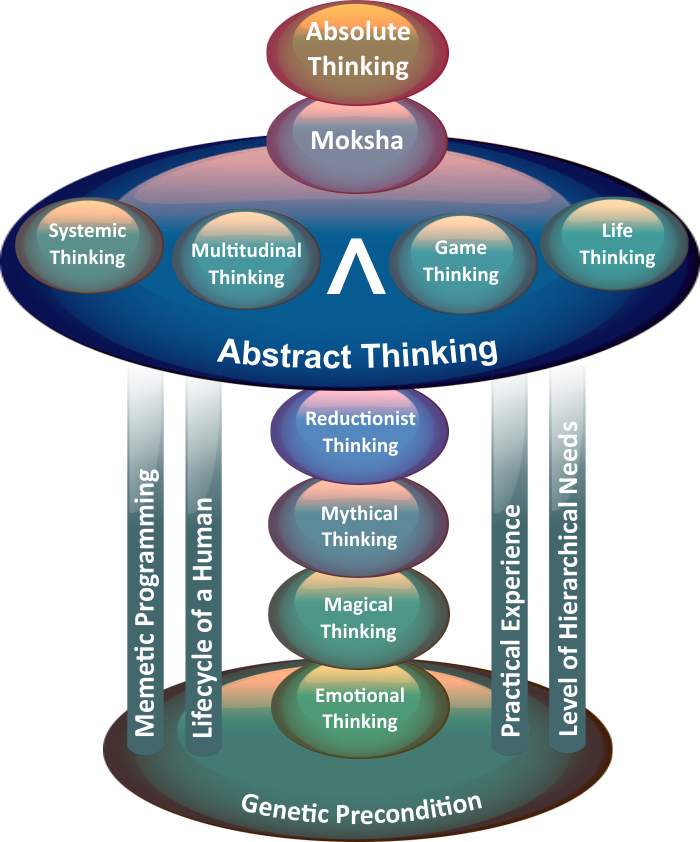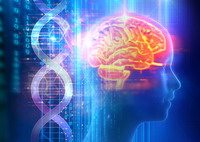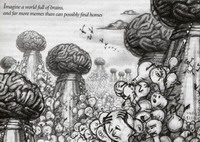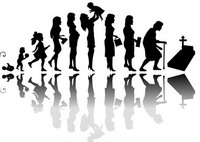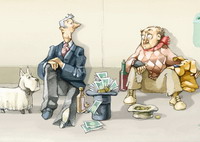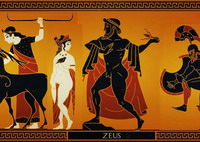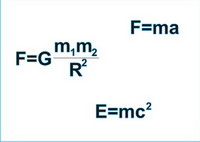Absolute thinking - definition of the concept
 If you have never practiced critical thinking then you simply see what you are told to see.
If you have never practiced critical thinking then you simply see what you are told to see.
Yeonmi Park (1993-) a North Korean defector.
Absolute thinking

Introduction:
The definiendum of thinking in the vocabulary of The Physics of Life is as follows:
There are many definitions of thinking so it is difficult to find a universal one. The vast majority of them describe thinking as a process carried out by the brain, used to achieve a goal.
The basis for thinking is the worldview - a set models of various predefined models of concepts. Thought is said to be the creation of these models within the brain, analyzing their perceived behaviours, drawing conclusions after this analysis and making subsequent decisions.
Definiens:
Absolute thinking is the sum of such elements as: possessed knowledge (theoretical, practical and historical), skills of: perception, interpretation, finding patterns and combining concepts; ability to construct models allowing a full understanding of reality and, if possible, its prediction, and when accurate prediction is not possible then the probability distribution of possible events. In particular, this applies to phenomena related to life.
Remarks:
-
I was contemplating a definiendum for this concept. I had no doubt that I should use the word absolute in the sense of full, total, complete. I hesitated whether to use thinking or worldview proposed by Tom Elpel. Thinking won at the end as it describes the activity of the human brain, whilst worldview is more associated with its current state.
Associated concepts:
Table of elements of thinking

|
|
|
Genetic precondition
|
|
|
Definiens: Thinking depends on our genetic design. |
Remarks:
|
Emotional thinking
|
|
|
Definiens: Thinking in which instinctive behaviour and emotions play a dominant role. They have been built in us by biological evolution, and these are the patterns which ensure, in the best way, survival of our species. It is basically a state of preconsciousness (prethinking). Characteristics featuires of emotional thinking are:
|
Remarks:
|
Memetic programming
|
|
|
Definiens: Characteristic elements of thinking resulting from the influence of memes, which are created by:
Circles, such as cultural, religious, social etc., in which we were born and in which we act
Family and neighbourhood in which we are raised and live
Professed religion or ideology
Education and how we are educated
Professional environment in which we operate
We are very vulnerable to this programming. When this happens, an interesting phenomenon occurs called the curse of knowledge, which manifests itself by blocking the cognitive abilities by the knowledge already acquired. The proof of this is the story of a boy culturally reprogrammed in childhood, who never again accepted the culture of his true homeland. Another proof of how easily humans are programmable is the Ron Jones' experiment. In just 5 days, the experimenter turned about 200 teenagers into a group presenting fascist behaviour. |
Remarks:
|
|
Summary:
The best example of memetic programming and the consequences associated with it is learning a native language. In childhood it comes much easier than when we are already mature people. Acquired knowledge makes it difficult not only to acquire the next one but also blocks access to it - foreign language sounds are automatically ignored as meaningless (see Curse of knowledge).
Memetic programming is very durable. It is confirmed by the story of Alojz - a Pole reprogrammed to be a German who, in principle, failed to return to Polishness.
In matters consistent with programs developed by biological evolution and stored in genes, memetic programming is very fast. This is confirmed by an experiment carried out by Ron Jones, who managed to create a group of active fasists about 200 teenagers in just 5 days.
|
|
Lifecycle of a human
|
|
|
Definiens: Thinking depends on gender and stage of Lifecycle of a Human:
|
Remarks:
|
The fulfillment of needs level
|
|
|
Definiens: Thinking depends on the two following factors:
|
Remarks:
|
Magical thinking
|
|
|
Definiens: Thinking in terms of concrete and tangible objects, characterized by the conviction that one can control reality, that everything is possible and anything can happen. In explaining phenomena, people, who think in this way, appeal to the supernatural, divine beings or deities. Events occur because someone wants them to and someone controls them. |
Remarks:
|
Mythical thinking
|
|
|
Definiens: Thinking associated with the beginnings of awareness, of the causes and effects and the beginnings of evaluation. It uses bivalent logic: "Yes / No", "White / Black", "good / bad". The analysis of intermediate states is rejected as expensive and time-consuming. When conclusions are drawn there immediately follows a phase of their obstinance: only accepting the facts which prove this conclusion and discarding all others [See Experiment "2,4,6"]. Any criticism is automatically opposed. People who thing in a strong mythical way are thought of as "Know-it-alls". |
Remarks:
|
Reductionist thinking
|
|
|
Definiens: Reductionist thinking is only regading the most important factors of an examined phenomenon, rejecting the influence of other elements and searching for cause and effect linkages. This thinking is characterized by:
Striving to discover the simplest rule to explain the subject and having the deep conviction that such a rule exists.
Conviction that rules of cause and effect are a one-way linear phenomena. A person who thinks in this way does not understand that the same factor used in a small scale will trigger a positive reaction of a system, but a large usage will result in a negative, completely different one.
This often occurs in medicine: the same chemical substance may be used either as a poison or a cure depending on the dosage.
Dichotomous thinking is it's characteristic element.
The phenomenon of the curse of knowledge means that reductionist thinking is blocking the transition to the next level of thinking. People who think in reductionist way, even though they understand the dilemma (a situation which cannot be solved with a single rule), argue that the answer lies within a magical formula which has not yet been discovered. |
Remarks:
|
Attention 1
|
|
|
|
|
Abstract thinking
|
|
|
Definiens: Abstract thinking is the ability to create highly generalised concepts related to objects (as a reminder, the concept of an object is very general and relates to real and unreal objects), creation in the imagination of their models, and perform mental operations that enable:
Abstract thinking has several levels, and can be best illustrated with maths:
|
Remarks:
|
Systemic thinking
|
|
|
Definiens: Systemic thinking is based on the analysis of phenomena as real objects, systems and processes, finding their causative factors and defining its characteristics and characteristic of their interactions. The main features of systemic thinking are:
|
Remarks:
|
|
Summary:
Systems theory –
originally it was a biological theory, then it was developed and expanded by cybernetics and system engineering, and is also included in trends in social sciences such as sociology and economics. Recently, it has also become a reference point in cognitive science and information technology, and strives for ever-wider generalizations as "systemics" or "general systems theory".
[Wikipedia pol., access 2020.02.10]
Cybernetics –
scientific study of control and communication (information transfer) in animals and machines.
[Wikipedia pol., access 2020.02.10]
Social cybernetics –
the scientific study of processes, goals and methods of controlling society.
[Wikipedia pol., access 2020.02.10] Although systemic thinking claims to explain everything, this claim is premature. Systems theory does not take into account all the issues related to game theory, man and his properties, and highly non-intuitive phenomena (see multitudinal thinking). So proposing an ideal socio-political system based on systems theory or cybernetics is far too premature.
People: Norbert Wiener (1894-1964) - an American mathematician and philosopher, he is considered the creator of cybernetics. He formalized the concept of feedback, and showed its importance in such disciplines as technical sciences, control systems, computer science, biology, neuroscience, philosophy and sociology. Norbert Wiener was one of the first to put forward the thesis that intelligence is the result of a feedback system that can be simulated by machines. It was one of the first and very important steps towards the development of modern artificial intelligence. Ludwig von Bertalanffy (1901-1972) - an Austrian biologist and philosopher, who laid the foundations for general systems theory. Ross Ashby (1903-1972) - English psychiatrist, pioneer of cybernetics (learning how to control machines and living objects).
Literature:
|
|
Multitudinal thinking
|
|
|
Multitudinal thinking is thinking in terms of a broad spectrum of higher mathematics. It analyzes reality using set theory, statistics and probability calculus. It is not intuitive, it has to be a learnt skill. In the old tale of the wheat and chessboard, the winner of the chess match is offered a prize. The winner asked for one grain of wheat on square one, 2 on square two, 4 on square three, 8 on the next and so on. The wealthy loser agreed, thinking that this was a poor prize. However, as we know the final number of grains is unimaginably high: 18 446 744 073 709 551 615. This is more than the yearly output for most countries.
Paradoxes:
Dilemmas:
Iterated dilemmas: The paradox of industrialisation is a link between multitudinal thinking and game thinking, because profit and profitability enter the equation. The analysis of the Kyosaki quadrant belongs to multitudinal thinking. It shows that there is a certain characteristic distribution according to the four types of employment. Since, according to The First Law of The Physics of Life, our behaviour depends on how we gain money (resergy), the distribution according to the types of employment translates into a distribution of four characteristic types of thinking. |
|
|
Definiens: Multitudinal thinking is the analysis of reality in terms associated with set theory and statistics. The main features of multitudinal thinking are:
|
Remarks:
|
Game thinking
|
|
|
Thinking in terms of conflict of interest, thinking in terms of resources, i.e. economically, thinking in terms of flow objects whose structure is a temporary state created by flowing streams of energy, material and information. Simple examples of such objects are: flame and vortex; more complex: bank account and enterprise; and the most complex is: a living object, which also replicates itself, creating similar copies. |
|
|
Definiens: Game thinking is an analysis of reality in relation to the conflict of interest. It's characteristics are:
The basis of game theory is a conflict of interest understood as competition for limited resources. Therefore, everything that is related with the concept of resource is crucial in this theory. Economics is a science that deals with resources, due to this, economics is very important in game thinking.
Ability to apply game theory to create cognitive models and predictive models.
Awareness that each game has its own characteristic elements.
Ability to see the rules of cause and effect according to their nature, namely: linear as linear and non-linear as non-linear.
Awareness of the existance of Matrix, which is caused, among other things, by the use of von tactics by everybody.
Awareness of the existence of different kinds of dilemmas (in relation to resergy) and that they can cause endless discussions with one of the parties temporarily triumphant.
The ability to solve complex optimization problems while taking into consideration the probability distribution.
Knowledge of the supercompensation phenomenon and issues related to training.
One of the key elements of game thinking is the knowledge of information theory. How information arises, how it is processed and its role as a causative factor. We must always keep in mind that information, as a resource, is neither additive nor conservative.
Game theory should be included in biology as a field closely related to life. Every living object absorbs resources to replicate. In turn, the multiplication of living objects quickly leads to a situation of resource scarcity, i.e. a conflict of interest. And that is what game theory explores. To understand what mechanisms led to the differentiation of cells in multicellular living objects, the knowledge of the economical Law of Comparative Advantage, is crucial. Iterated prisoner's dilemma and Iterated cooperation dilemma are a natural transition from game thinking to life thinking. |
Remarks:
|
Life thinking
|
|
|
Definiens:
Life thinking is the analysis of reality which depends upon particularly specific systems, namely living objects, their populations and the interactions between them. The main features of a living object are:
the characteristic features of life thinking are:
|
Remarks:
|
Practical experience
|
|
|
You'll never learn anything special, you'll never be remarkably creative, and finally, you'll never achieve a spectacular success if you don't feel the negative consequences of your decisions on your shoulders and the positive ones in your pocket. This applies to individuals and social groups. Jan Kubań |
|
|
Definiens: Absolute thinking can not be taught. Most of its elements have to be experienced. Theoretical knowledge must be confronted in its application and result from one's own life experiences. Gathering of this kind of experience involves analyzing and drawing conclusions from:
Involvement in useful ventures.
Taking all the consequences of one's own decisions and actions, both positive and negative .
Wise goals - setting and achieving them effectively.
People management and leadership, but true leadership, not one by proxy.
Building effective teams performing appropriate tasks.
Directed breeding of animals or plants.
I was lucky that I experienced the simultaneous start of a huge part of the nation to improve its material conditions. Every Pole were convinced that they would set up a business and succeed. After reading a couple of biographies written by rich people, it seemed so easy. The dreams of all these people have been verified by life. Most businesses simply failed. Not only did they earn nothing, many of them lost a lot. Those who succeeded have learned the hard way, and often damaged their health. Only a few have earned really a lot. And only a few of these few have achieved great and real success. Real, because it was achieved not thanks to the cronyism, bribes, arrangements, breaking the law and commandments, but resulting from customer satisfaction. The most important moral that came from this situation was that all these people eventually realised that, when starting a business, A/. many of their ideas were wrong and B /. and they subsequently discovered they knew little about their business. Real practical experience is acquired over the years, achieving ambitious, outstanding goals, struggling with misfortunes, adversities and competitors, bearing full responsibility for actions and decisions. |
Remarks:
|
Attention 2
|
|
| In the above diagram there is a strange, white chevron. It is a symbol of the operation called the logical conjunction. It is used to emphasize that, in order to acquire the skills to think in an absolute way, a person must have simultaneous knowledge of systemic thinking, multitudinal thinking, game thinking, life thinking and to gain relevant practical experience in all these areas. | |
Moksha
|
|
|
Definiens: Moksha, in The Physics of Life, is defined as the state of human consciousness manifested in the liberation from the illusions, delusions, and the emotions of the group and self. It is a state of consciousness which has almost perfect knowledge of ahamkara - the weaknesses of self and the nature of surrounding objects and the nature of the interactions between them. To achieve his state a person should seek to:
|
Remarks:
|
Absolute thinking
|
|
|
Definiens: Absolute thinking is the ability to perceive and analyse reality, such as it is. This thinking is characterized by:
|
Remarks:
|
Absolute thinking - Remarks

To think absolutely, in general, means:
-
An awareness that such a way of thinking exists and is composed of the aforementioned elements.
-
Skillful and appropriate use of the each of the aforementioned ways of thinking to the analysis a phenomena;
Systems, to which absolute thinking is applicable, are usually a very complicated issue because:
-
they have many different processes occuring in them;
-
there is a lot of interference and feedback between the processes, not only in respect of the given process, but also on the process-system relationship, which means that the process generated by the system may change the system itself.
-
it is extremely difficult to teach how to analyse such systems because their visualization is nigh on impossible: they are unable to be drawn, nor is it able to show changes in the many processes and elements of the system over time. A solution may be to film the systems, but even then it is difficult to show the simultaneous courses of action during the same situation from alternative points of view,
-
they relate to social systems whose elements are living objects, and these are genetically programmed in a similar, but different way. This programming manifests itself in, for example, the form of emotions, which significantly, irrationally and inexplicably affect the decision-making process. This results in the highly unpredictable behaviour of the system,
-
inherently unpredictable non-linear phenomena can have enormous influence on a system,
-
the essence of the processes related to achieving the goal by living objects is the confrontaion of tactics. The two most important elements of this are: recognition of the tactics used by the enemy and using our own tactics to confuse them, to put it simply, cheating. See von Croesuss tactics, von Neumann tactics and von Sociall tactics.
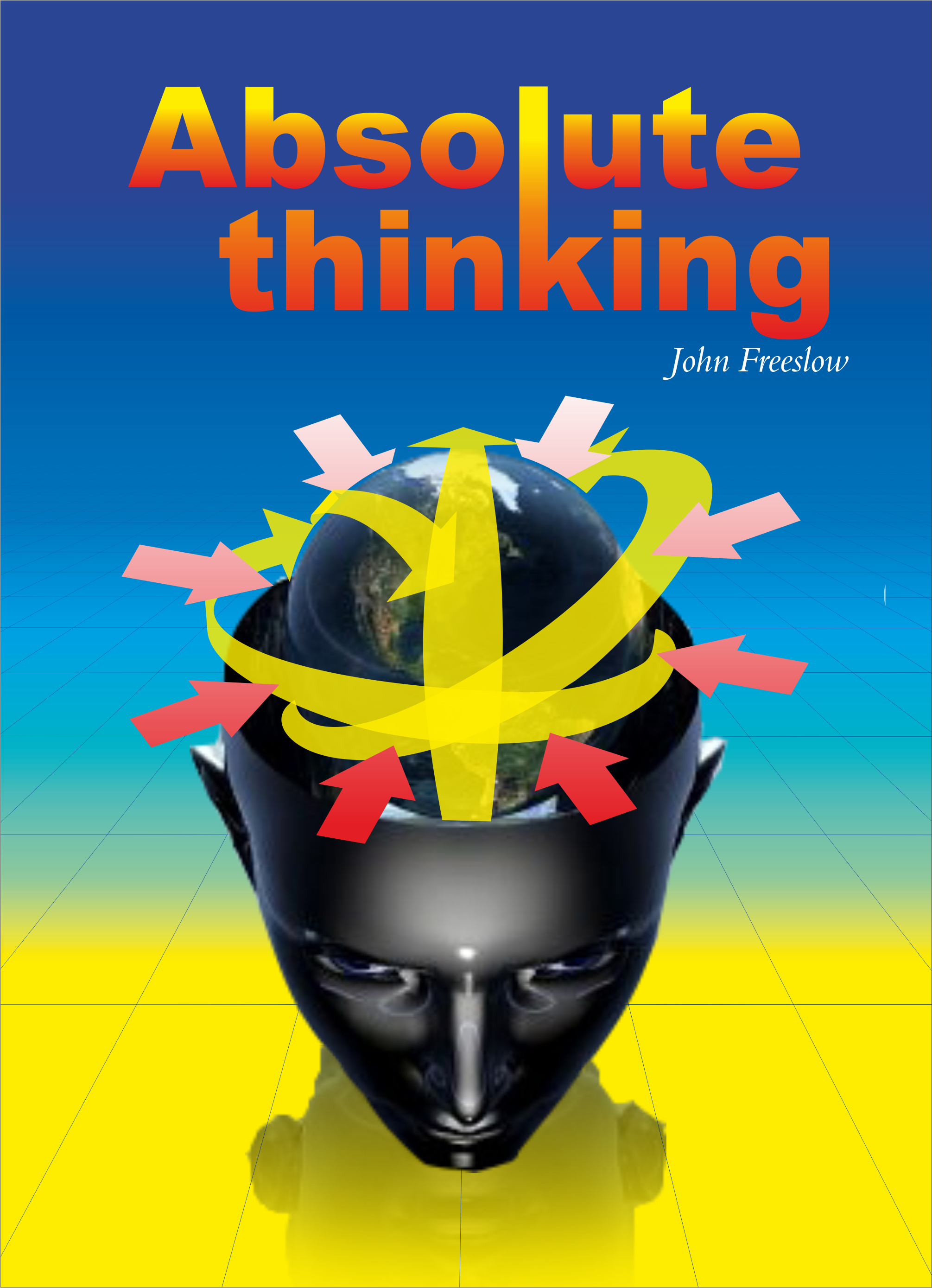
Absolute Thinking - Old Definition

Definiens:
Absolute thinking consists of three main types of thinking:
taking into consideration the specific systems which are living objects. Their main characteristics are: the active absorption of resources and multiplication. Mainly, living objects absorb other living objects or their remnants. This results in:
-
optimization in the absorption of necessary (and unnecessary) resources in the given external conditions;
-
conflict of interests, shown in detail by the mathematical theory of games. Generally, these conflicts are defined in typical dilemmas of interest, such as, for example, the I/group dilemma, prisoner's dilemma, short-term/long-term dilemma and male/female dilemma;
-
emotional behaviours of living objects created in subsequent iterations of biological evolution, such as, for example: syndrome of attractiveness, syndrome of authority, red-eye syndrome, group thinking syndrome, Kali's syndrome, Machiavelli's syndrome, "My weakness their fault" syndrome, etc.
In essence, absolute thinking consists of:
-
To be consious of these three types of thinking;
-
Skillful and proper use of each type of thinking to analyse the phenomenon;
-
Taking into consideration that living objects are flow systems and that social systems, of which living objects are part of, are flow systems as well. Moreover, be aware that the parameters of these flows can change dynamically;
-
Taking into consideration that living objects, and the systems they are in, are products of biological evolution, in which they are constantly evolving. Because of this, the absolute thinker should be aware of the gerpedelutionary classification of groups
-
Fully understanding natural barriers to objective observation. One of these barriers is typical emotional behaviour, which applies both to the observer and the observed. Therefore, you should be free of observer bias, such as: prejudice, vanity, self-interest and the interests of groups to which you belong;
-
Awareness of natural barriers in the processing of information, that results in the inability to make a hundred percent faithful simulation of the behaviour of complex systems.
Systems, to which absolute thinking should be applied, are usually very complicated because:
-
Many processes occur simultaneously
-
In living systems there is a specific kind of feedback where the process generated by the system changes the system itself;
-
It is difficult to fully analyse such systems because, as an individual, you are not able to see all aspects simultaneously. As the solution we can consider movies, but even then it is impossible to show lots of different perspectives of one event in a one given moment. Usually, it is sequential.
-
The analysis of social systems should consider the behaviour of all its elements - living objects. And these, as products of biological evolution, are genetically programmed in similar, but crucially different, ways from each other. This programming manifests itself, for example, in the form of human emotions that significantly, in a way that is hard to rationally explain, influence the decision-making process. This results that the living system behaves highly unpredictably.
-
Non-linear phenomena are important parts of living objects and the systems they are in.
-
the core processes applied by living objects in achieving their goals is the competition between tactics. The two most important elements of this competition are: identifying, at all costs, the tactics of the opponent and hiding our own or misleading the opponent for our own tactics - to put it simply, cheating. See von Neumann tactics, von Croesus tactic and von Sociall tactics.
Because of all of this, absolute thinking is very hard to teach. One should be self-motivated and devoted to achieve enlightenment.
Absolute thinking - Symbols

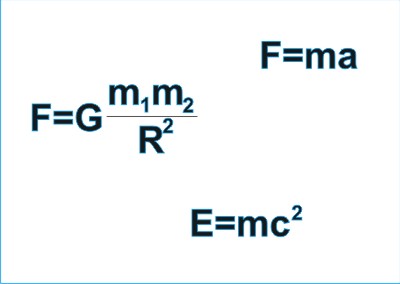

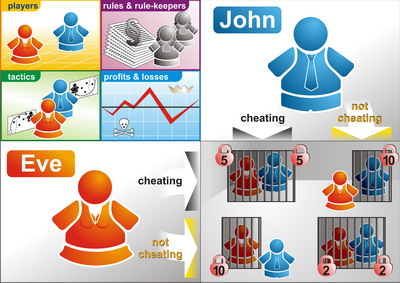
How to Think Like Leonardo da Vinci

 In "How to Think Like Leonardo da Vinci", author Michael Gelb does a superb job of capturing the essence of Leonardo’s genius and laying it out in a practical framework for self-improvement. Here are the 7 key areas that shaped Leonardo’s genius which you can use as a framework for your own self-improvement:
In "How to Think Like Leonardo da Vinci", author Michael Gelb does a superb job of capturing the essence of Leonardo’s genius and laying it out in a practical framework for self-improvement. Here are the 7 key areas that shaped Leonardo’s genius which you can use as a framework for your own self-improvement:
- Curiosità (curiosity): an insatiable quest for knowledge and continiuous improvement.
- Dimostrazione (demonstration): testing knowledge through personal experience rather than taking others explanations for granted.
- Sensazione (sensation): the continual refinement of the senses to sharpen observations and responses.
- Sfumato (fogging): a willingness to embrace ambiguity, paradox, and uncertainty.
- Arte/Scienza (art/science): the development of the balance between science and art, logic and imagination, “whole-brain” thinking.
- Corporalitá (corporality): the cultivation of fitness and poise because a healthy mind requires a healthy body.
- Connessione (connection): a habit of weaving together multiple disciplines around a single idea, recognizing and appreciating that all phenomena are connected.
